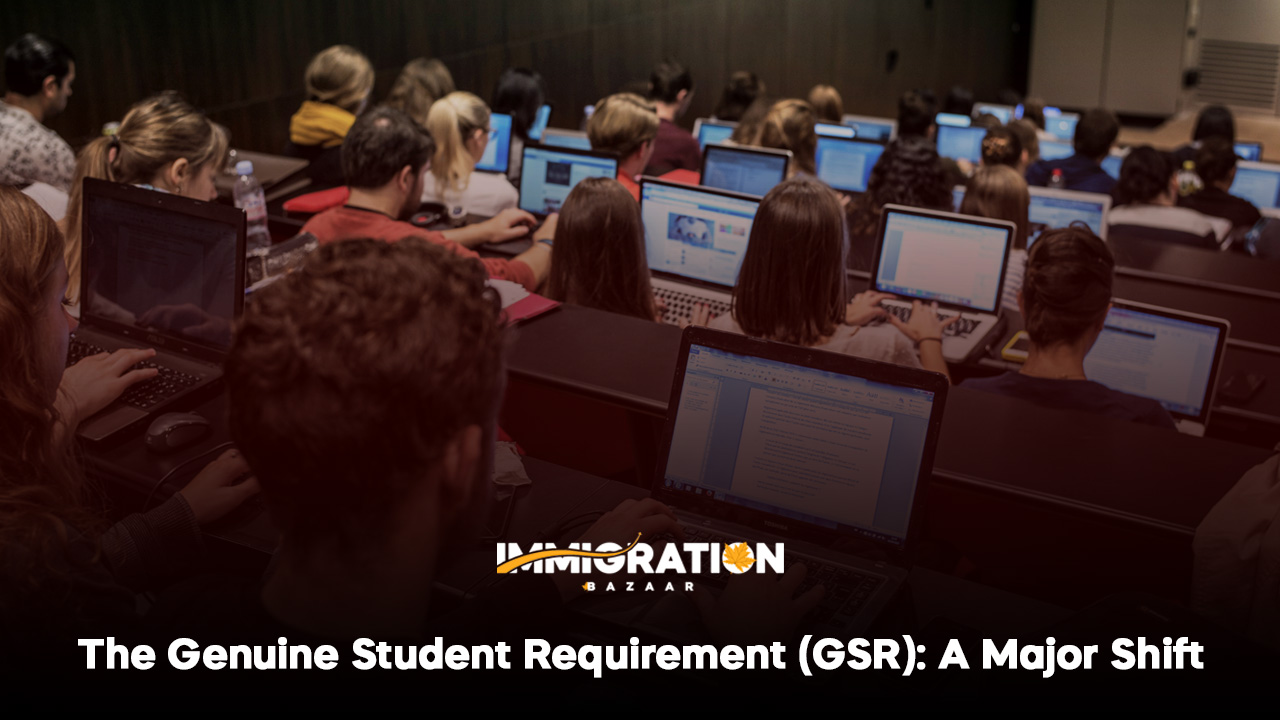Australia has long been a premier destination for international students due to its world-class education system, multicultural environment, and beautiful landscapes. The country has consistently attracted students from around the globe, especially from countries like India, China, and Southeast Asia. With its reputation for offering top-tier universities and post-graduation opportunities, many students dream of studying and building a future in Australia.
However, as with any country, Australia frequently updates its immigration and visa policies to reflect both national economic priorities and global trends. Starting from May 23, 2024, Australia is set to introduce significant changes to its student visa regulations. These updates, which will replace the “Genuine Temporary Entrant” (GTE) requirement with the “Genuine Student Requirement” (GSR), alter the English language requirements, reduce the duration of post-study work visas, and introduce a new “Skills in Demand” visa.
For anyone considering studying in Australia, it is crucial to understand these new regulations. This article will explore the details of these changes, their implications for prospective and current international students, and the broader context of global student visa trends.
-
The Genuine Student Requirement (GSR): A Major Shift
One of the most significant changes that will take effect on May 23 is the replacement of the Genuine Temporary Entrant (GTE) requirement with the Genuine Student Requirement (GSR). The GTE was previously a cornerstone of Australia’s student visa assessment process. It required applicants to demonstrate that their primary intention for entering Australia was to study, and that they would likely return to their home country after completing their studies.
While the GTE aimed to prevent non-genuine applicants from using the student visa program as a means of migrating to Australia for reasons other than education, it also faced criticism. Many applicants and migration agents found it overly complex and subjective, leading to inconsistencies in visa outcomes.
-
Why the Shift from GTE to GSR?
The decision to move from the GTE to the GSR reflects Australia’s recognition that many international students do have long-term aspirations to stay and work in Australia. Instead of focusing on whether students are likely to return to their home countries, the GSR will focus more on whether the applicant is a genuine student with the intention to pursue education and succeed academically in Australia.
This shift reflects a more student-centric approach, emphasizing the applicant’s commitment to education rather than their post-graduation intentions. By replacing the GTE, which was often seen as a barrier, with the GSR, the Australian government aims to streamline the visa process and reduce the subjective nature of visa officer assessments.
-
Key Aspects of the GSR
The new Genuine Student Requirement (GSR) will assess applicants based on the information they provide during the visa application process. This will include:
- Academic Intentions: Visa applicants will need to demonstrate a clear and genuine intention to study in Australia. This involves outlining how the chosen course aligns with their academic background and future career plans.
- Course Selection: Applicants will be evaluated on their choice of course and institution. Choosing a course that logically fits into one’s career aspirations or academic history will be critical for meeting the GSR.
- Financial and Personal Circumstances: The GSR will still consider whether the student has the financial capacity to live and study in Australia, but the focus will be less on whether they intend to return home after their studies. This change is expected to make it easier for students with strong academic and career plans to secure visas, even if they hope to eventually seek work or residency in Australia.
- Commitment to Studies: As part of the GSR, applicants will need to demonstrate that they are serious about their academic goals, including meeting any language or academic prerequisites.
The new GSR process is likely to make it simpler for students with clear academic and career plans to obtain a visa, while reducing the risk of rejection based solely on suspicions of future migration intentions.
-
Changes to English Language Requirements
Another major update to Australia’s student visa rules involves changes to the English language proficiency requirements. Currently, most international students are required to meet a minimum score on English language tests such as IELTS, TOEFL, or PTE in order to obtain a visa. These tests are designed to ensure that students can participate effectively in university-level education where English is the primary language of instruction.
-
Why Are the Requirements Changing?
Australia has adjusted its English language requirements to better align with the changing global landscape of higher education. With more universities offering support programs for non-native English speakers, the Australian government is aiming to ensure that students can succeed in their studies without facing language barriers. However, these changes may also reflect Australia’s desire to remain competitive with other English-speaking countries like the United States, the UK, and Canada, which are also evolving their visa policies to attract international students.
-
New English Language Requirements
The specifics of the new English language requirements have not yet been fully detailed, but the government has indicated that they will be more flexible, especially for students who can demonstrate academic competence or who are enrolled in preparatory language programs. This means that while English proficiency will still be a requirement, the criteria may be broadened to accommodate a wider range of applicants.
For example, students who do not meet the standard English test scores might still qualify for a visa if they are enrolled in an English Language Intensive Course for Overseas Students (ELICOS) or other preparatory programs that help them meet the language requirements over time. This flexibility could open doors for more students who previously might have struggled to meet stringent English language test criteria.
-
Reduction of Post-Study Work Visa Duration
Post-study work rights have long been one of the biggest draws for international students choosing Australia. The opportunity to gain work experience in the country after graduation provides students with a valuable pathway to permanent residency and long-term employment. However, starting on May 23, Australia will reduce the duration of its post-study work visas.
-
Current Post-Study Work Rights
Currently, international graduates can apply for a Temporary Graduate Visa (subclass 485), which allows them to stay in Australia for two to four years (depending on the level of their degree) to gain work experience. This visa has been particularly popular among students from India, China, and other countries with strong academic ties to Australia.
-
Why Is the Duration Being Reduced?
The reduction in post-study work rights is part of Australia’s broader strategy to manage migration and align the post-study work visa program with its labor market needs. The government is likely seeking to prevent oversaturation in the job market and to ensure that post-study work opportunities are available in sectors with genuine skills shortages.
-
The Impact of Reduced Post-Study Work Visas
The new regulations could make Australia a less attractive option for international students compared to countries like Canada, which has recently extended post-study work rights for certain degree holders. However, students who can secure employment in fields experiencing labor shortages may still have opportunities to stay in Australia through other visa pathways, such as the Skilled Migration Program.
-
Introduction of the “Skills in Demand” Visa: A New Pathway to Residency
While post-study work rights are being reduced, Australia is simultaneously introducing a new pathway for international students through the “Skills in Demand” visa, thanks to the India-Australia Cooperation and Trade Agreement (IA-ECTA). This visa will allow students who gain skilled job experience in key sectors to remain in Australia for up to four years, with the possibility of transitioning to permanent residency.
-
What Is the “Skills in Demand” Visa?
The new Skills in Demand visa is designed to address labor shortages in key industries, such as healthcare, engineering, technology, and trades. Graduates who can secure employment in these high-demand fields will be eligible for this four-year visa, which is a longer-term option than the standard post-study work visa.
-
Impact of the IA-ECTA on Migration
The India-Australia Cooperation and Trade Agreement (IA-ECTA) is expected to strengthen ties between the two countries by facilitating greater mobility for skilled workers. Indian graduates, in particular, are likely to benefit from this visa, as India is one of the largest sources of international students for Australia. By linking migration policy with trade and economic cooperation, the Australian government is signaling its intent to build stronger relationships with key partner countries while addressing its own labor market needs.
-
Pathway to Permanent Residency
One of the most attractive aspects of the Skills in Demand visa is that it provides a clear pathway to permanent residency for graduates who can demonstrate their ability to contribute to the Australian economy. This aligns with Australia’s focus on skilled migration and its desire to attract individuals who can address critical skills shortages.
-
Broader Context: Global Trends in Student Visa Policies
Australia’s recent changes to its student visa policies are part of a broader trend among destination countries seeking to balance attracting international talent with managing domestic labor market needs and political pressures. Countries such as Canada, the United States, and the United Kingdom have all introduced reforms to their student visa systems in recent years.
-
The U.S. and the Optional Practical Training (OPT) Program
In the United States, the Optional Practical Training (OPT) program allows international students to stay and work for up to three years after graduation (for STEM fields). This has made the U.S. a competitive destination for international students looking to gain work experience after completing their studies.
-
The UK’s Graduate Visa
The UK reintroduced its Graduate Visa in 2021, allowing students to stay for up to two years (or three years for PhD graduates) after completing their degree. Like Australia, the UK is seeking to attract international students while balancing post-study work opportunities with its labor market demands.







